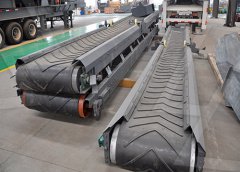
Plants rooted in rocks Nature Geoscience
To get the nutrients they need, plants can break up rocks and produce acids that dissolve them. Rock composition greatly influences the accessibility and abundance of nutrients that...By Marina Somma Reviewed by: Sylvie Tremblay, M.Sc. Molecular Biology and Genetics The breakdown of rocks due to What Natural Activities Work to Break Down
احصل على السعر
Weathering National Geographic Society
Article Vocabulary Weathering describes the breaking down or dissolving of rocks and minerals on the surface of the Earth. What Is Biological Weathering? Weathering is the gradual destruction of a rock or other surface caused by environmental Biological Weathering: How Living Things Break
احصل على السعر
Organic (Biological) Weathering Explained
Chemicals produced by fungi can break down the minerals in rocks. Algae consume the minerals. As this process of breakdown and consumption continues, rocks start to develop holes. As described Plant roots can also weather rock through chemical processes. When dead roots decompose, they release carbon dioxide; this is sometimes converted into carbonic acid, which chemically breaks What Is Biological Weathering? Sciencing
احصل على السعر
Erosion National Geographic Society
These processes cause rocks to dislodge from hillsides and crumble as they tumble down a slope. Plant growth can also contribute to physical erosion in a process called bioerosion. Plants break up Plants and animals can do the work of mechanical weathering (figure 4). This could happen slowly as a plant’s roots grow into a crack or fracture in rock and gradually grow larger, 4.3: Weathering Geosciences LibreTexts
احصل على السعر
The Rock Cycle National Geographic Society
Organic sedimentary rocks, like coal, form from hard, biological materials like plants, shells, and bones that are compressed into rock. The formation of clastic and organic rocks begins with the Erosion is a mechanical process, usually driven by water, wind, gravity, or ice, which transports sediment and soil from the place of weathering. Liquid water is the main agent of erosion. Gravity and mass wasting processes 5.2: Weathering and Erosion Geosciences
احصل على السعر
What Is Biological Weathering? Sciencing
Biological weathering only refers to weathering caused by organisms -- animals, plants, fungi and microorganisms such as bacteria. While certain forms of biological weathering, such as the breaking of rock Chemical weathering is the chemical breakdown of rocks. Biological weathering is the breakdown of rock by humans, animals, and plants. How does Earth shape the Earth’s surface? While the Earth appears to be round when viewed from the vantage point of space, it is actually closer to an ellipsoid. However, even an ellipsoid does not How does weathering change the shape? [FAQ!]
احصل على السعر
What human activities results to breaking down of rocks
How do plants and animals break down rocks? Organic weathering, also called bioweathering or biological weathering, is the general name for biological processes of weathering that break down rocks. This includes the physical penetration and growth of roots and digging activities of animals ( bioturbation ), as well as the action of lichens andA fracture in a rock is called a fracture Fractures consist of faults, joints, and anything else that divides a rock into 2 or more pieces. How do plants and animals trigger the breakdown of rocks? Plants and animals can be representatives of mechanical weathering The seed of a tree might grow in soil that has actually gathered in a broken How did rocks and mountains break apart? NavigueWeb
احصل على السعر
How are rocks broken down by biological weathering
Biological weathering is the breakdown of rock by humans, animals, and plants. How does biological weathering contribute to soil formation? Respiration of carbon dioxide by plant roots can lead to the formation of carbonic acid which can chemically attack rocks and sediments and help to turn them into soils. There are a whole range ofHow do plants break down rocks and turn into soil as years goes by? As the roots grow, they widen the cracks, eventually breaking the rock into pieces. Over time, trees can break apart even large rocks. Even small plants, such as mosses, can enlarge tiny cracks as they grow. Animals that tunnel underground, such as moles and prairie dogs, Does weathering take a long time? [Fact Checked!]
احصل على السعر
How do the roots of plants affect rocks? Short-Fact
How do plants break down rocks and turn into soil as years goes by? Respiration of carbon dioxide by plant roots can lead to the formation of carbonic acid which can chemically attack rocks and sediments and help to turn them into soils. There are a whole range of weathering processes at work near the surface of the soil, acting together Ask students to make a claim about plants causing rocks to break and support it with evidence from data. Students might use science ideas about forces to reason why the evidence supports the claim. Students might also use the science idea that plants need space to grow to reason why the data supports the claim. How does a tap root How do tree roots break down rocks? Short-Fact
احصل على السعر
What is it called when tree roots break rocks? Short-Fact
Which process roots of plants breaking rocks apart? Plants and animals can be agents of mechanical weathering. The seed of a tree may sprout in soil that has collected in a cracked rock. There are two primary methods by which living organisms can and do break down rocks. The first is mechanical, which is commonly seen as a tree Plants and animals can do the work of mechanical weathering (figure 4). This could happen slowly as a plant’s roots grow into a crack or fracture in rock and gradually grow larger, wedging open the crack. Burrowing animals can also break apart rock as they dig for food or to make living spaces for themselves. Figure 4.4.3: Weathering Geosciences LibreTexts
احصل على السعر
Definition of Weathering of Rocks Sciencing
Weathering of rocks describes the process of weakening and breaking down of rocks and minerals. This can happen via both nonliving and living factors, such as temperature changes, plants and Weathering is the breaking down or dissolving of rocks and minerals on Earths surface. Once a rock has been broken down, a process called erosion transports the bits of rock and minerals away. Water, acids, salt, plants, animals, and changes in temperature are all agents of weathering and erosion.How do lichens dissolve rock? Studybuff
احصل على السعر
How Do Plants Grow in Rocks? Unearthing the Secrets of
Plants face a tough challenge when it comes to dispersing seeds over hard ground. Unlike soil, bare rock offers no cushion for seeds to bury themselves in. But resourceful plants have evolved clever ways to spread their offspring far and wide: Tiny and Tumble: Some plants produce tiny, lightweight seeds that easily tumble across stone surfacesThe process is known as frost wedging. You can put this liquid in the small cracks and freeze it. The water will push against the cracks as ice has more volume. When you melt it, the rock cracks will get wider. You can repeat this process many times because minor cracks will not break the rocks at one time.Why Does Water Frozen in the Cracks of a Rock Help to Break Down the Rock
احصل على السعر
How Does Weathering Break Down Rock? Sciencing
One of nature’s primary mechanisms of physical weathering is frost wedging. Water intrudes into a rock through cracks and then freezes. This causes an expansion with pressures up to 4.3 million pounds per square foot, resulting in rock fragmentation. Exfoliation, or unloading, occurs when the pressure on a rock is reduced The paper by Korboulewsky and co-authors in this issue of Plant and Soil (Korboulewsky et al. 2020) and its companion article (Tetegan et al. 2015) address some of these questions by way of a greenhouse experiment.Poplar saplings (Populus euramericana) were raised in 3 L pots from cuttings.Pots were filled with fine earth and 0, A critical question for the critical zone: how do plants use rock
احصل على السعر
How do biological weathering occurs? [Expert Review!]
Biological weathering is the process in which plants, animals, and bacteria break down rocks into smaller pieces. This weathering can be done, for example, through tree roots growing in cracks in rocks and eventually breaking the rock apart. As time goes on, things break down and change. What is the main agent of biological weathering?Physical weathering consists of breaking apart rocks and crystals through different processes without changing their chemical composition. The results of physical weathering are smaller components of the same material that is being weathered. There is no change in chemical composition. Physical weathering tends to produce mostly sand-sizedPhysical Weathering Geosciences LibreTexts
احصل على السعر







